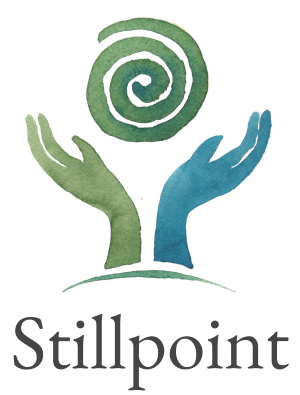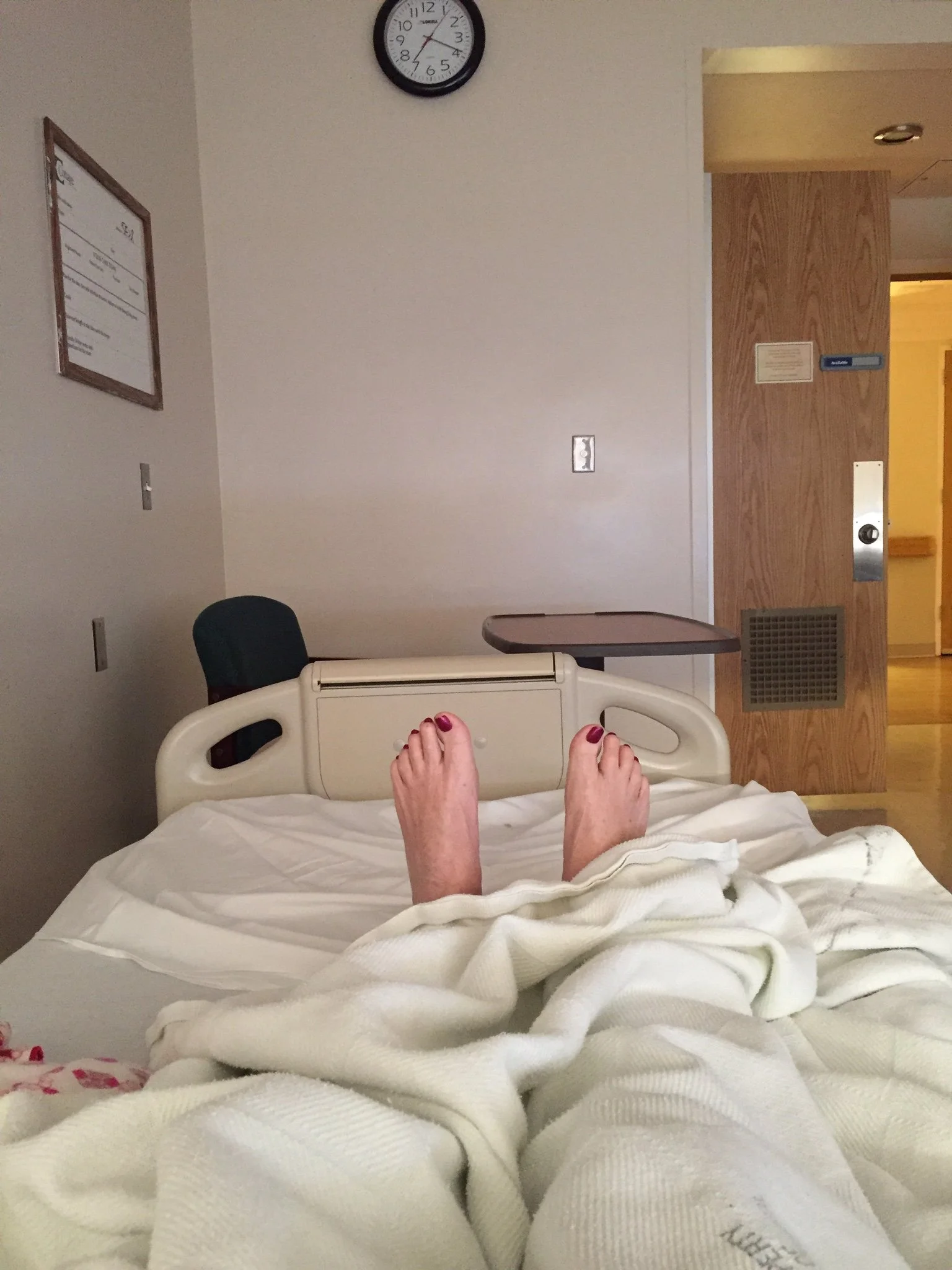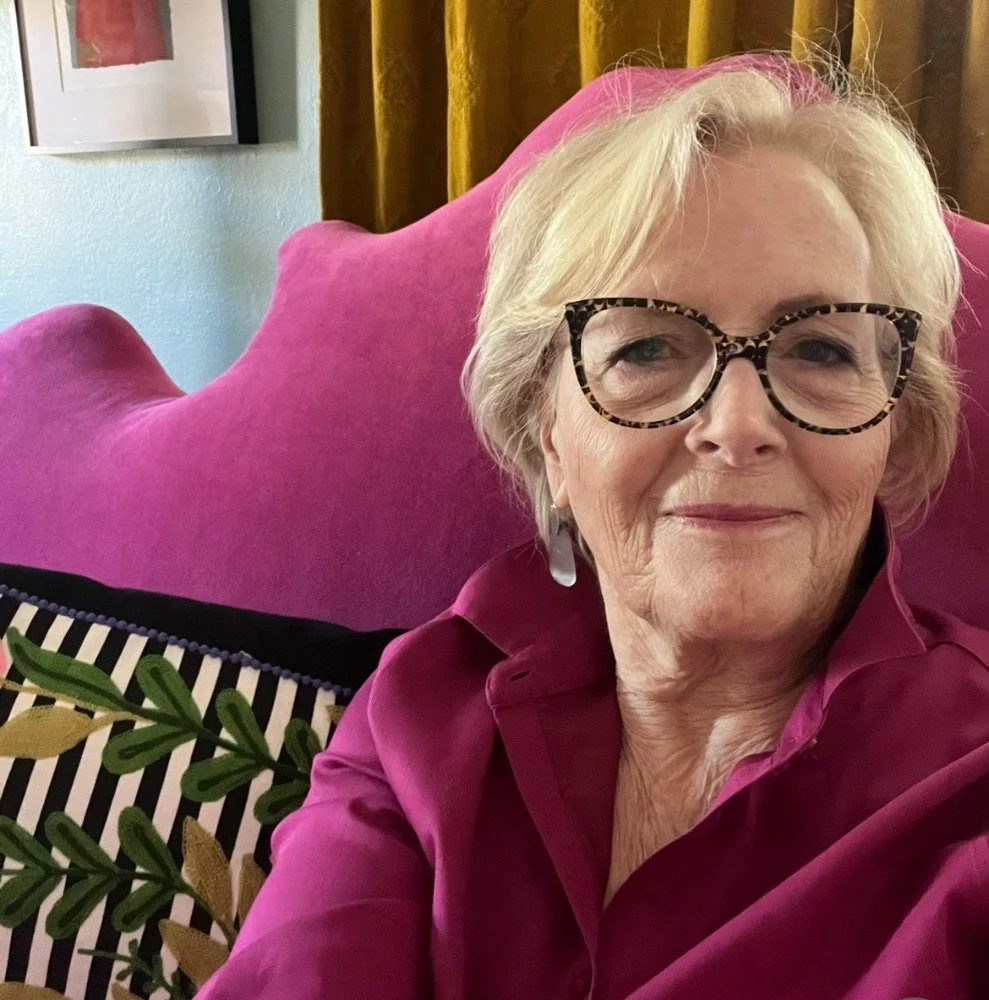Spiritual Direction and Recovery
By Melinda Carey
The Art of Spiritual Direction Year 1 Mentor
In January of 2016 I found myself, a 68 year-old woman, in a detox ward staring at my feet. I marked the occasion by snapping a photo of said feet, knowing this was the end of a long journey of alcoholism and addiction. On that day I was able to be honest – to admit I was powerless and I became willing to do whatever it took to begin a new way of living. I felt immediate relief and freedom in that honesty, as it had been a very long time since I had been completely honest about anything. The next day, a couple of men from Alcoholics Anonymous came to the hospital and held an AA meeting as we were full of anti-seizure meds and slumped in our chairs. The men were openly sharing their stories and experiences with strength and hope, full of joy and humor! I was overcome with a feeling I had not had in a very long time; first a smile cracked through my stiff lips and it was immediately followed by the bubbling up of a great big belly laugh. A real laugh-not the phony one I had become so practiced with. That honest laugh was nothing less than a spiritual awakening. That small burning ember deep in my soul was ignited by the very breath of God and it revealed to me that I was not dead. It was a spiritual awakening a long time in the making. That spiritual ignition in my belly that day was the fuel that propelled me forward into a new way of life – one day at a time. I share this with you now because I am not unique. Our stories and circumstances are different, but our spiritual malady is our common ground. What on the face of it was a way to stay sober soon became a spiritual journey that led me to enter Stillpoint’s, The Art of Spiritual Direction program.
During the two years of the Stillpoint program, a wonderful integration between my program of recovery and what I was learning about spiritual direction occurred. In Stillpoint, we learned about a Rule of Life which is akin to the twelve steps “way of life.” We began the process of looking inward: what were the obstacles, past experiences, and our shadow self that needed to be lovingly looked at through spiritual direction? In recovery, we take a “searching and fearless moral inventory of ourselves,” (Step 4) as we search for what were the underlying causes and conditions of our addiction and then we share it with our Higher Power and another person, who may be our Spiritual Director. We develop our contemplative skills and practices, learning to set aside our own ego and be fully available to another. In recovery, we have the 11th Step, which asks us to “seek through prayer and meditation to improve our conscious contact with God as we understood God, praying for knowledge of God’s will for us and the power to carry that out.” Discernment!
And the big finale – Step 12 “having had a Spiritual awakening . . .”
As with any spiritual practice, the recovery steps are a guideline and a tool that requires regularity and intentional practice. As we say “progress not perfection.” Thank God that my spiritual journey is not based upon perfection but on the “spirituality of imperfection”.
As spiritual directors, we are sure to encounter a Directee who is either directly or indirectly affected by family members or friends or it is they themselves who are suffering with a form of addiction. Depending upon where they are in that journey, there are often strong feelings of shame, blame, anxiety and fear. Holding space for them to break through the denial and to admit that they or their loved one needs help is the first step and it may take a long time. It is good practice to have some knowledge about the disease of alcoholism, addiction and the other sister programs, Al-Anon, Co-dependency, Adult Children of Alcoholics to name but a few. In addition, there are “Open” recovery meetings in person and on Zoom where visitors are welcome. I am most familiar with the Twelve Step program but it is certainly not the only option. The bookstore shelves are filled with books on this topic.
My spirituality of imperfection, and the integration of spiritual direction and holy listening, is invaluable as I mentor interns through ASDI and work with women in recovery. It is a delight and unexpected joy at age 78 to begin each day in gratitude, including gratitude for my disease which brought me here.
As we pray,
God, grant me the serenity to accept the things I cannot change, the courage to change the things I can, and the wisdom to know the difference.
Amen.
Melinda Carey
Melinda was raised in Los Angeles in a family of storytellers and actors which has uniquely prepared her to be open and attentive to listening to a wide variety of life stories. She worked as a lay person in the Episcopal Church in for thirty years and retired in 2019 as Guest House Director for Mount Calvary Monastery and Retreat House in Santa Barbara, CA. Following retirement, she entered the Stillpoint program, Art of Spiritual Direction and is currently a Mentor for Stillpoint’s Art of Spiritual Direction’s year one. Melinda completed the Group Spiritual Direction course and leads groups with folks in recovery and at her church. Melinda relocated to the Atlanta area to be near her family and works with women in recovery and loves the community at her Episcopal Church. The thread that binds it all iswhere it all began, listening to stories and seeking the Holy within those stories.


